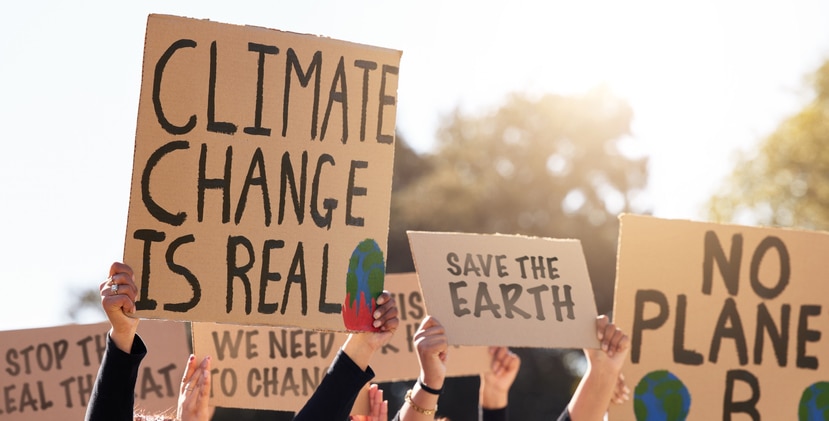Climate change isn’t just a looming environmental issue. It’s a pressing workplace concern that’s already impacting millions of workers globally. The increasing intensity of natural disasters, rising temperatures, and unpredictable weather patterns pose new challenges and risks to workers, necessitating a comprehensive response from businesses, large and small. Let’s explore how climate change affects workers and review meaningful strategies companies can take to mitigate these impacts.
Understanding the Direct Impacts on Workers
Health Risks: Workers in construction, agriculture, and outdoor maintenance industries face increased health risks due to higher temperatures and longer heat waves. Heat stress can lead to severe health problems, including heat stroke, dehydration, and cardiovascular diseases. Also, changing climate patterns contribute to poorer air quality, exacerbating respiratory conditions.
Job Security: Certain industries are likely to experience significant disruption due to climate-related changes. For example, agricultural workers face uncertain job futures with shifting crop viability zones and altered growing seasons. Similarly, workers in coastal regions are at risk due to rising sea levels and increased storm intensity affecting fisheries and tourism industries.
Migration and Displacement: People will be displaced as certain regions become less habitable due to severe weather events or rising sea levels. This displacement often results in economic migration, where workers are forced to leave their homes and seek employment elsewhere, disrupting local labor markets and increasing competition for jobs in more stable areas.
Psychological Stress: The psychological impact of climate change on workers, often referred to as “eco-anxiety,” is becoming increasingly recognized. Workers are concerned not only about their immediate environment and job security but also about the broader existential threats of climate change.
What Can You Do?
Implementing Adaptation Strategies
Business leaders can adopt several strategies to protect their workers from the impacts of climate change:
- Health and Safety Adjustments: Implementing more frequent breaks, providing cooling areas, and ensuring adequate hydration are immediate steps to protect workers from heat stress.
- Flexible Work Arrangements: Allowing for flexible working hours or remote work during extreme weather conditions can help minimize risks to workers.
- Training and Awareness: Educating workers about the risks of climate change and training them in emergency preparedness can reduce vulnerabilities and enhance resilience.
Mitigation Through Sustainable Practices
To combat climate change directly, companies can reduce their carbon footprint:
- Energy Efficiency: Improving energy efficiency in operations, from manufacturing to office environments, can significantly reduce greenhouse gas emissions.
- Sustainable Supply Chains: Businesses should create sustainable supply chains by choosing suppliers prioritizing environmental responsibility.
- Investment in Renewable Energy: Transitioning to renewable energy sources for corporate operations is another vital step in mitigating climate change impacts.
Supporting Workers in Transition
As industries adapt to the realities of climate change, workers may need to transition to new roles or sectors:
- Reskilling Programs: Providing training programs to help workers acquire new skills relevant to emerging industries, such as renewable energy or green technology, is crucial.
- Job Placement Services: Offering support in job placement can ease the burden on workers who need to find new employment due to industry changes or displacement.
Advocacy and Policy Engagement
Companies hold significant sway in political arenas and can advocate for policies that protect the environment and support workers:
- Supporting Environmental Legislation: Businesses can support legislative efforts that aim to reduce carbon emissions and promote renewable energy.
- Public-Private Partnerships: Engaging in partnerships with governments and NGOs to develop local solutions to climate challenges can also be beneficial.
- Join Other Organizations: Organizations such as We Mean Business and B Corp can connect you with other like-minded businesses working toward similar goals.
Climate change is reshaping the world of work in profound ways. As the planet warms, the ripple effects touch industries, economies, and, most critically, workers themselves. Companies have both a moral imperative and a business interest in taking decisive actions to mitigate these impacts. By implementing adaptive workplace policies, engaging in sustainable practices, supporting workforce transitions, and advocating for impactful climate policies, businesses can lead the way in creating a resilient, sustainable future. The corporate sector’s proactive engagement in addressing the challenges of climate change not only helps protect vulnerable workers but also contributes to the global effort against environmental degradation. By acting now, businesses can ensure they are part of the solution rather than a continuation of the problem.
